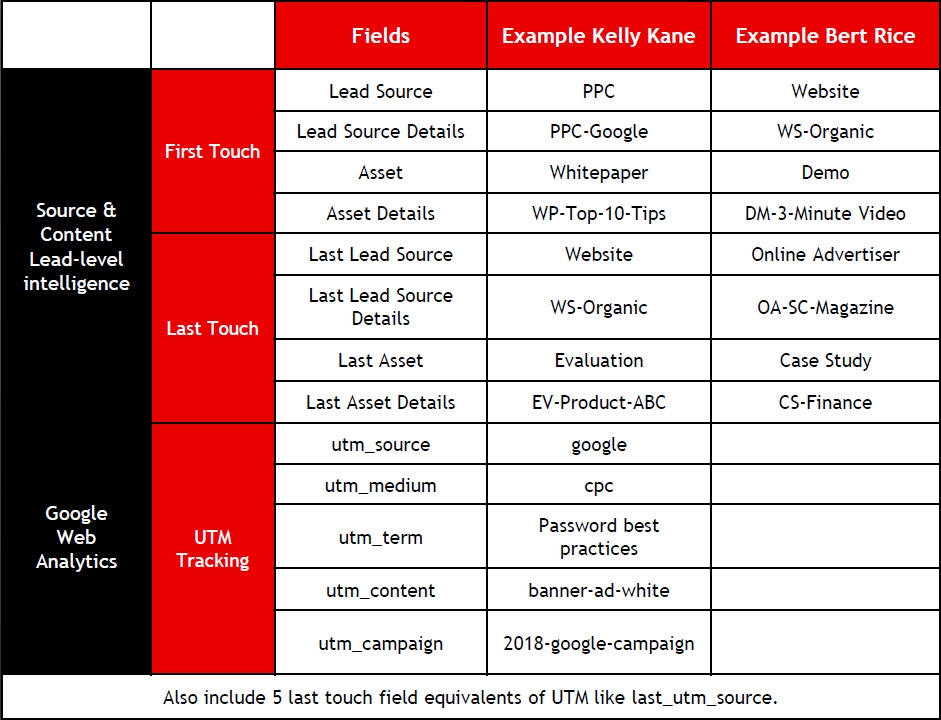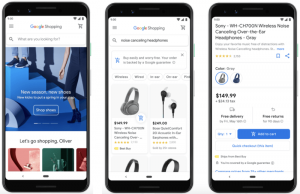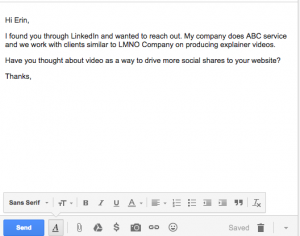Do you own an easy button that instantly provides vision into your company’s marketing impact? If so, bottle it up and sell it.
We all want the pretty charts and graphs that provide insights on how we should run our business. The reality is there is no easy button to attain insights nirvana. Data is often poor. Processes are usually not fully defined. Systems don’t work the way we want.
The Strategy You Put In = The Vision You Get Out
Sure, you can get a new wizbang reporting application but the intelligence you gain is only as good as the data you collect. Like building a house, setting up the structure of your marketing efforts is key to the intelligence you’ll get in the future. Investing in process and systems will help drive those insights for long-term gains.
If your business is having these issues, you are not alone. According to Leadsrx, 56% of marketers say campaign tracking/tagging is a big attribution challenge.
The good news is you have the opportunity to leverage some methods to give your business the vision it needs. Read on to learn some strategies to get your attribution back on track and to create a repeatable process for ongoing intelligence collection.
It’s Hot Out There
How do we know that 134°F is the highest temperature ever recorded in the United States? Because someone measured it in Death Valley in 1913 (Congrats on learning a new party trivia question). What if no one measured the temperature that day or guestimated the temperature–we wouldn’t have an accurate vision into that record.
Gaining insights on marketing investment is very similar in that it’s very difficult to get push-button reports on data you never collected in the first place or collected inaccurately.
Does your data look like this? You can’t report on what you don’t collect (or collected incorrectly). To get this right, you need a mix of strategy, process, technology and special sauce to create an attribution foundation–we call this the Attribution Management System (AMS).
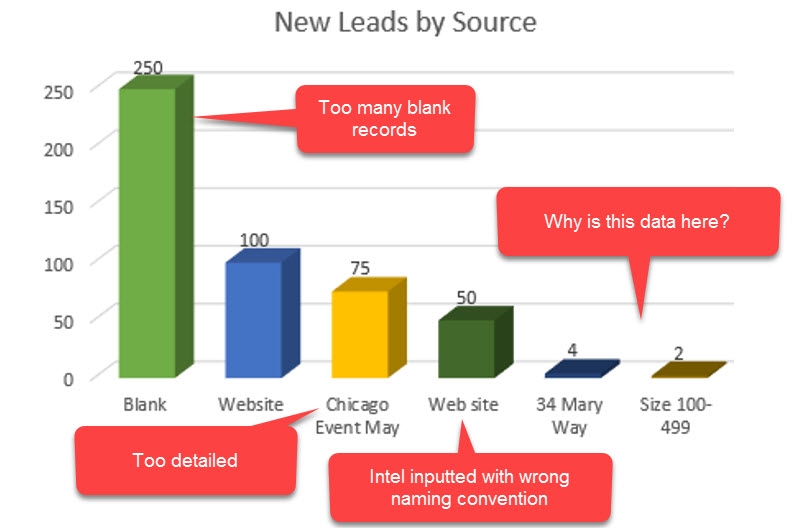
This chart shows a simple example of how data and process challenges can affect the insights. As a test, try running a Lead Source report for the past six months to see what results you get.
What is the Attribution Management? How Does it Benefit our Business?
Attribution Management is a strategy/process that enables organizations to manage and track multiple marketing touch points. Attribution Management helps organizations gain visibility into top marketing investment vehicles while also streamlining marketing efforts.
78% of marketers plan to increase their use of cross channel attribution. Net Imperative Infographic
A comprehensive attribution strategy helps organizations gain insight into marketing investment ROI and answers questions such as:
- How to did the lead get to us?
- What did the lead want?
- How much revenue is influenced by marketing?
- What is the original touch?
- What is the last touch that drove an opportunity?
- How much credit should a given touch receive?
Don’t Forget Efficiencies
Our definition of attribution management is a little different than most definitions in that it also includes the benefits of efficiencies and data management.
With proper setup, an attribution strategy helps marketers maintain consistent data within the system while offering more campaign flexibility. For example, if a Last Lead Source Detail included a partner name, the marketer could trigger an alert to that partner to support the partner channel.
What Can We Do? Introduction to the Attribution Management System (AMS)
As I mentioned previously, there is no easy button but there are crucial steps you can take to get started. Like a home blueprint, this 10-step AMS process is intended to provide organizations with a path to success. Strategy and actions may (and should) vary so please adjust your attribution blueprint accordingly.
This post highlights the high-level points. To go deep, download The Ultimate Guide to Attribution Management.
Step 1 – Map Your Marketing Strategy to Your Reports
The first step (and one of the harder ones) in the process is to determine how you want to track your success. Ask yourself “What do I want the final reports to look like?” The data you collect will lead to the intelligence you get later in the process.
Here, you’ll develop all your buckets for tracking and analysis. When we work with clients on this step, the whiteboard gets put to work. This process will require a lot of discussion and debate within your marketing team (e.g. Is a webinar a lead source or an asset?). If it doesn’t, you are doing it wrong.
There are up to 18 pieces of intelligence you can collect using this system. We call these fields the Attribution18.
To summarize, lead source intelligence provides insights on how leads got to you while asset information provides intelligence on what the leads wanted. Using the below example, Bert Rice entered the system via the website and requested a demo.
Google UTM information provides additional insights on web related referral information. You’ll get the urge to combine some UTM and lead source information. Depending on your situation, we recommend keeping that data separate as each tells a slightly different story. Plus, trying to mix the intelligence can lead to operational challenges.
Step 2 – Nail Down Naming Conventions
Next, document this naming convention and stick with it. Developing a consistent naming convention is the lynchpin to creating consistent intelligence and streamlining operations.
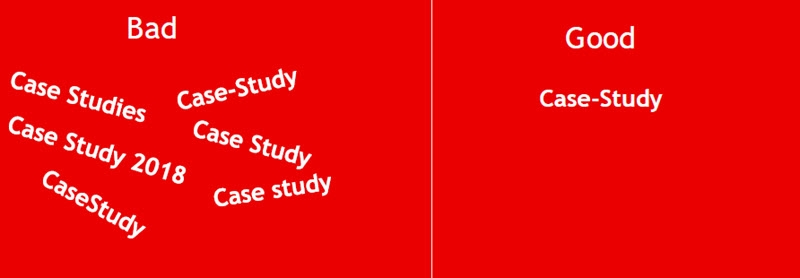
Step 3 – Get Those Fields Created to Collect Intelligence
Step 3 involves getting your Salesforce.com admin on the line to put in your request for the 18 Attribution fields and values defined in the previous step. Just follow your standard process for field creation-no wizardry here.

Step 4 – Create a First and Last Touch System
Unless you see a sign while walking along South Beach that says “Free drinks next hour,” it’s rare that one touch drives the deal. Rather, it usually takes multiple touches and multiple contacts to make the deal happen. They key here is to collect first and last touch intelligence to provide more reporting options.
In this step, ensure that systems are setup properly to allow or to block updates depending on the data requested. Specifically, make sure field updates are set appropriately in your marketing automation system.
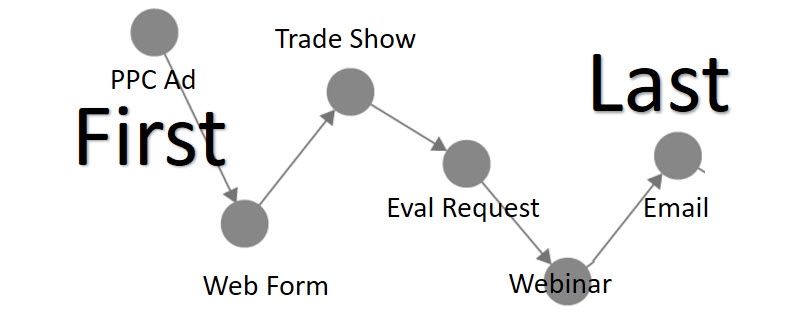
Step 5. Capture the Data Like an Assembly Line
Capturing the intelligence consistently is where many organizations struggle. Maybe Sales imported a new list into the system, or maybe a third party application is inserting new records. If your system doesn’t know about the capture method or the data is entered incorrectly, that will lead to intelligence issues.
EVERY input method needs to be documented and adjusted so that intelligence is applied consistently just like a product going on an assembly line. Besides the end results of better intelligence, this step will help build efficiencies for your organization by finding gaps in your lead collection process.
- Landing pages
- List Imports
- Manual one-offs
- Sales generated records
- Third-party systems
- And more

Example: When a lead fills out a form, this action is an excellent opportunity to collect relevant attribution data. One best practice for capturing the Attribution18 fields is to hide the fields within the form itself. Add Attribution18 fields to all forms as hidden fields. Get values from URL parameters or from a cookie.
Step 6. Build New Links
Now that you have setup your forms, it’s time to begin swapping out links in your advertisements, banners and website assets.
When a lead fills out the form with the new link, the values from the link will automatically pass into your system.
![]()
Step 7. Associate People to Campaigns
Step 7 is where all the magic happens for both marketing efficiencies and marketing attribution.
This essential step creates marketing efficiencies by making campaigns easier to manage for your marketing team. By leveraging last touch information to associate people with campaigns, this process sets up your data for campaign multi-touch analysis.
- IF a person fills out a form AND Last Lead Source Detail = a specific value.
http://go.xyzcompany.com/landingpage.html?LSD=OA-SCMagazine-2018 - THEN Add to your CRM or Marketing Automation Program/Campaign.

Step 8. Backfill Legacy Data (Or Not)
Step 8 involves developing a strategy around how to deal with existing data. Remember that once the attribution system is turned on, data will immediately start populating into your system.
With up to 18 new fields collecting data, organizations must strategize on what to do with existing leads. Expect to perform a lot of heavy lifting here.

Step 9. Get to the Glory. Create Reports to Gain Insight
With all the hard work put in, organizations can now begin gaining insight into their top assets and sources. You can use reports in Salesforce or Marketo to get intelligence.
A Sample of Basic Reports
- Leads Created by Quarter by Lead Source. Gain insight into the volume of leads coming in by marketing vehicle.
- Most Popular Asset. Organizations can see how assets such as white papers are performing against assets like case studies.
- Top Asset Detail or Top Source Detail. Drill down to see which asset or source drove the most amount of leads. Compare one asset or source against one another to determine which performs the best based on cost per lead.
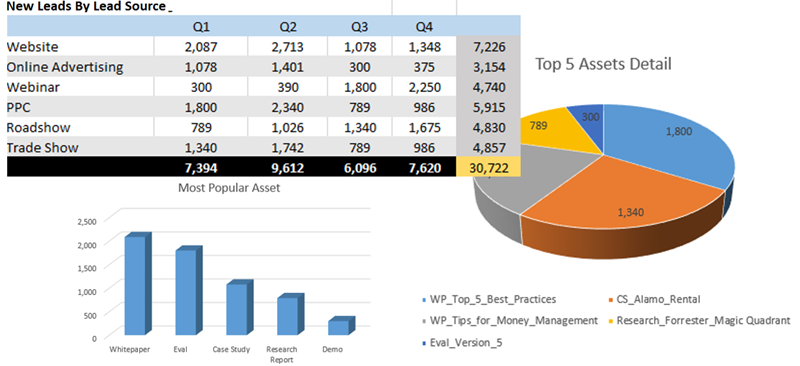
Or, go deeper and leverage third-party providers like LeanData, FunnelWise, BrightFunnel, Full Circle Insights, Bizible and others.
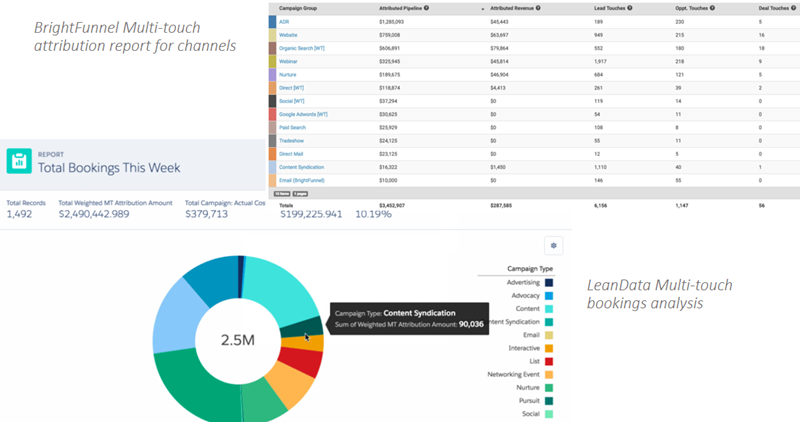
Step 10 Give Sales Better Intelligence
A Sales rep armed with relevant information can make the difference between a good call and a GREAT call.
In this step, use the added intelligence to improve communications with prospects and customers by offering a more complete view into the lead’s activities.
How?
- Update Salesforce Lead and Contact records with new attribution data.
- Integrate attribution fields into various Salesforce Queue views.
- Build new data into alerts to offer added insight.
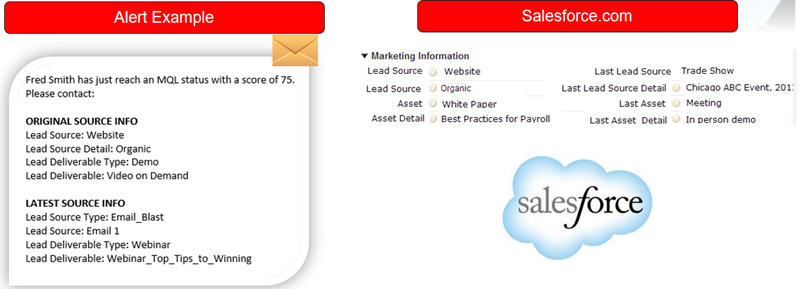
Wrap up – Focus on Attribution Management
If there is one thing I hope you take out of this post, understand that there is no easy button. Attribution Management takes strategy and upfront system setup
Developing the Attribution strategy is vital to measuring the success of marketing vehicles and providing Sales with insight into a lead’s actions.
Once strategy is set, organizations should follow this step-by-step guide to develop its own blueprint to success.
Business & Finance Articles on Business 2 Community
Author: Jeff Coveney
Founder and President at RevEngine Marketing and chief contributor to the RevEngine Insider Blog. Writer, Speaker and Digital Technology Lover, Marketo Champion and Certified Expert.… View full profile ›
(82)
Report Post
